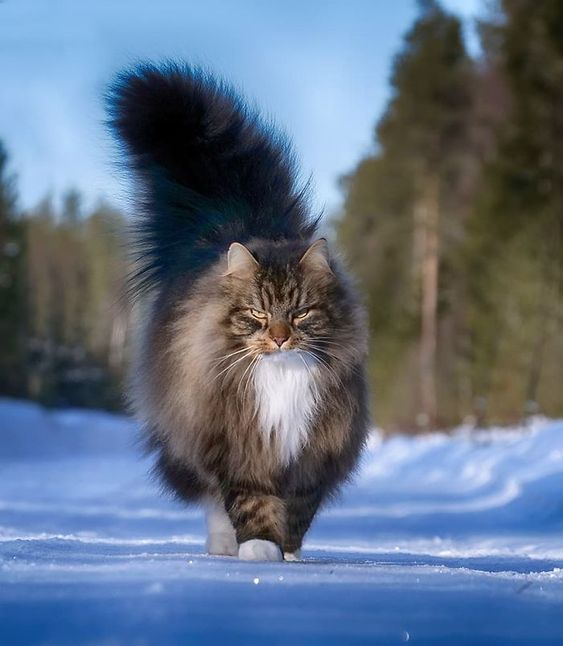
Norwegian forest cats have a reputation for being big, fluffy, and friendly. However, there’s more to these felines than meets the eye. For example, their origins are shrouded in mystery, with some theories suggesting their ancestors were black-and-white short-haired cats from Great Britain that Vikings brought aboard their ships as mousers. Others think they might be descendants of long-haired cats brought to Scandinavia by the Crusaders. In any case, these early relatives roamed Norway’s forests and eventually evolved into the large, dense-coated cats we know today.
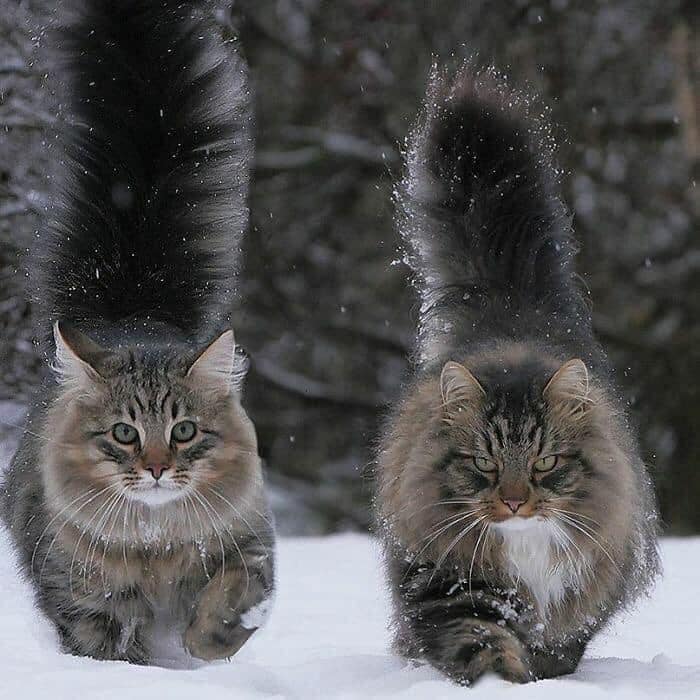
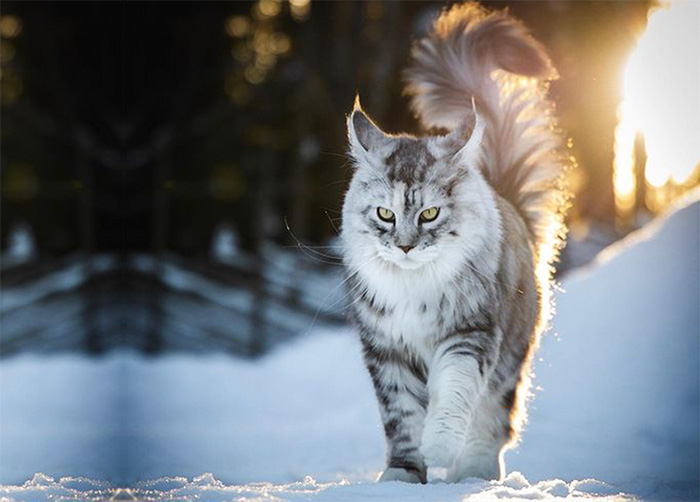
Norwegian forest cats are so impressive that they’ve even made their way into Nordic mythology as the “skogkatt,” a mythical mountain-dwelling fairy cat with an extraordinary ability to climb sheer rock faces. Some believe that these legends inspired the breed’s evolution, as their size, coats, and tree-climbing prowess are reminiscent of the skogkatt.
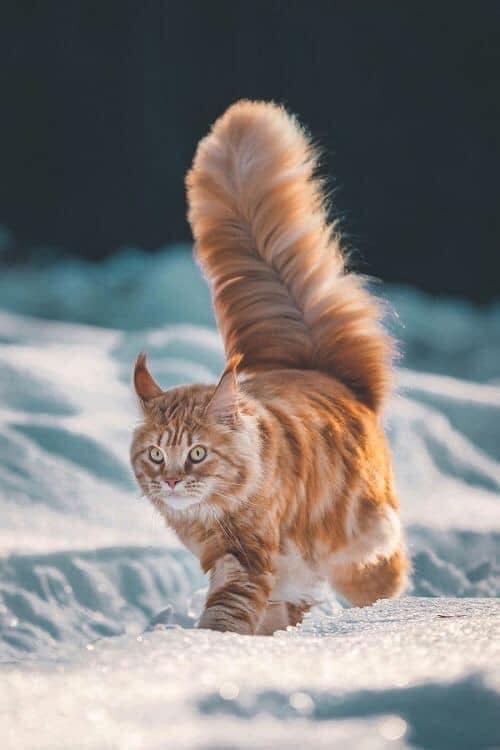
In fact, Norwegian forest cats are so cherished in their home country that King Olaf V of Norway designated them the national cat. It’s a shame, then, that these felines nearly became extinct at one point. Fortunately, breeders took steps to preserve the breed, which is now thriving around the world. Who knows, maybe one day America will gain its own national feline?
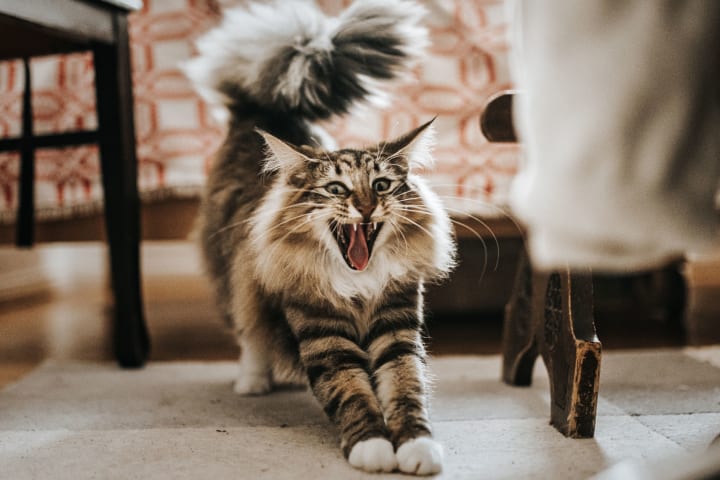
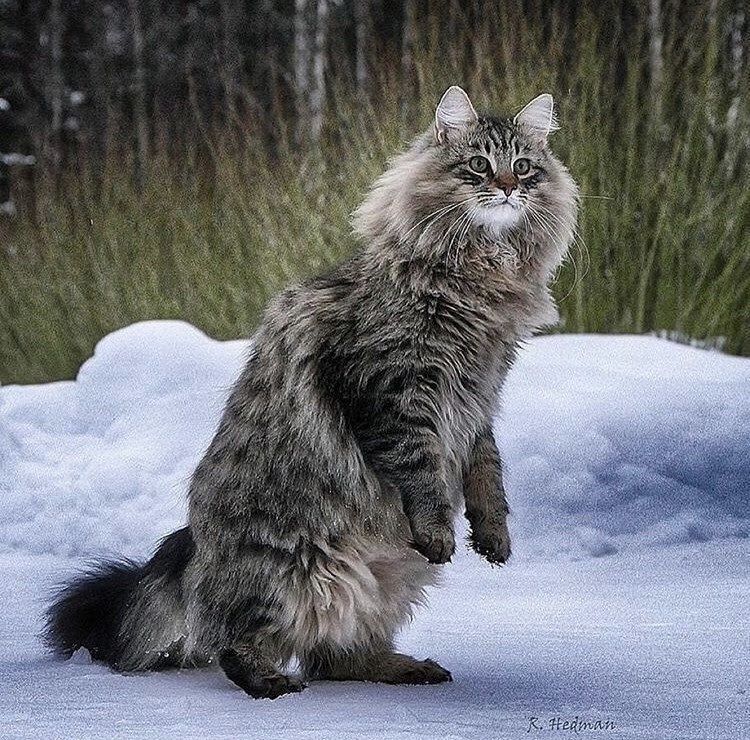
The Norwegian Forest cat was highly valued by farmers and sailors for its excellent hunting abilities, although it wasn’t recognized as a breed until the 1930s by enthusiasts. However, the onset of World War II saw a decline in interest for the breed, which almost led to its extinction due to crossbreeding. Fortunately, an official breeding program helped preserve the lineage of this fluffy feline for future generations. In 1977, the Norwegian Forest cat was officially accepted as a recognized breed by the Fédération Internationale Féline, and two years later, the first breeding pair of Norwegian Forest cats arrived in America. The Cat Fanciers’ Association also accepted the breed in 1987. These cats are immensely popular in Europe, especially Scandinavia, where they’re fondly called “Wegies.” They’re also hugely popular in France. Norwegian Forest cats are massive, with typical males weighing between 13 and 22 pounds. Additionally, they have thick fur that keeps them warm during winter, making them perfect for cold climates.
Even though Norwegian forest cats come in various colors and patterns, their distinguishing characteristic is their long, water-resistant double coat. This breed survived the harsh Scandinavian winters thanks to their tufted ears and toes, which function as natural earmuffs and boots. Despite their hardiness, they are predisposed to certain health problems such as hereditary heart issues, hip dysplasia, and glycogen storage disease type IV. Interestingly, Norwegian forest cats are related to Maine coons and genetic testing reveals that the latter breed descended from both the former and an extinct domestic breed. To differentiate between the two, observe their facial features; Norwegian forest cats have triangle-shaped faces while Maine coons have wedge-shaped heads with prominent cheekbones. Lastly, Norwegian forest cats are skilled climbers due to their sturdy claws and can even run down trees headfirst.




